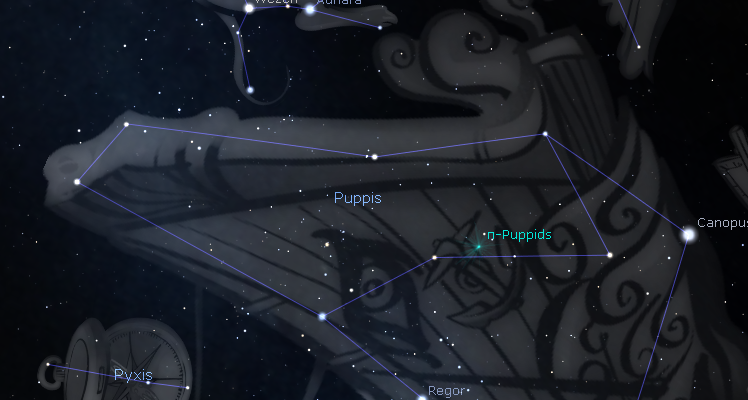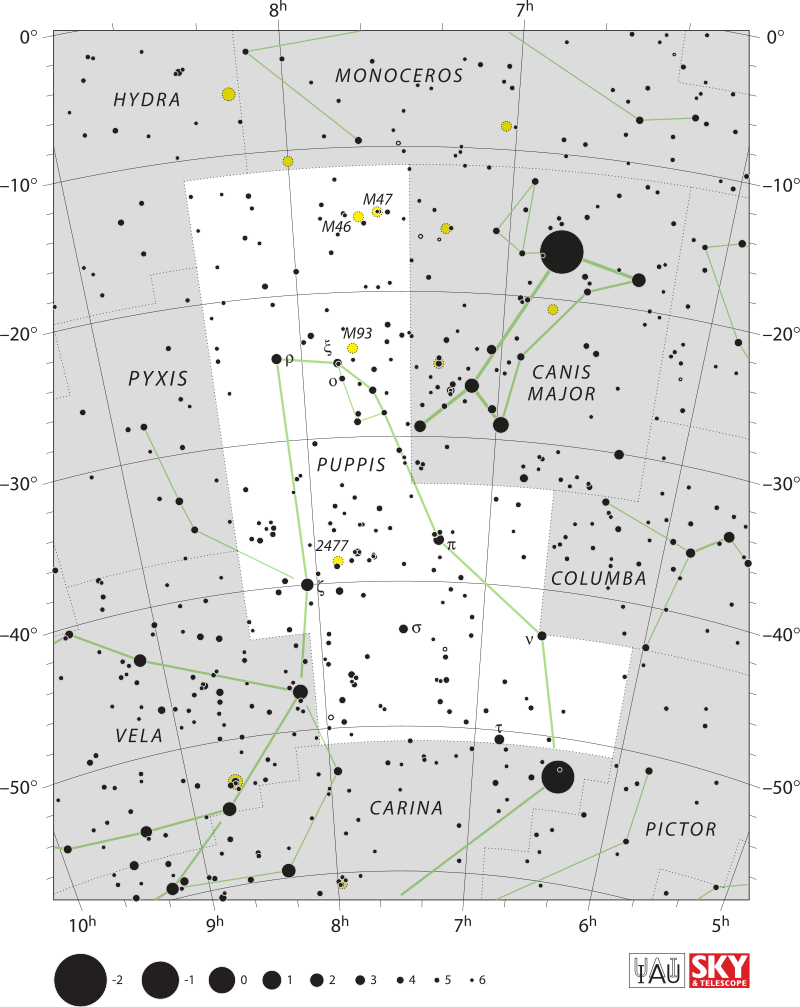|
A constellation in the southern sky is called Puppis. The ship of Jason and the Argonauts, Argo Navis, originally consisted of three pieces: Carina (the keel and hull), Vela, and Puppis, or the Poop Deck. Several centuries after its original depiction, Argo Navis was separated into these three parts (the sails of the ship). In terms of square degrees, Puppis is the largest of the three constellations. It is one of the 88 contemporary constellations that the International Astronomical Union has acknowledged.
The French astronomer Nicolas Louis de Lacaille divided Argo Navis into three parts in 1752, which included Argûs in puppi. Lacaille maintained a single set of Bayer designations for the entire constellation, Argo, notwithstanding the separation. Carina, therefore, possesses the, and Vela possesses the, and Puppis possesses the, and so on. (Wagman 2003) These three parts of Argo started to exist as distinct constellations in the 19th century and were formally added to the list of 88 contemporary IAU constellations in 1930. (Delporte 1930) |
Deep-sky Objects
Bayer stars - 76
Stars with planets - 6
Stars brighter than magnitude 3.00 - 1
Stars within 32 Ly - 3
Messier objects - 3
Meteor showers
Bordering
constellations
- Messier 46 (M46) – Open Cluster
- Messier 47 (M47) – Open Cluster
- Messier 93 (M93) – Open Cluster
- NGC 2451 – Open Cluster
- NGC 2477 – Open Cluster
- NGC 2438 – Planetary Nebula
Bayer stars - 76
Stars with planets - 6
Stars brighter than magnitude 3.00 - 1
Stars within 32 Ly - 3
Messier objects - 3
Meteor showers
- Pi Puppids
- Zeta Puppids
- Puppid-Velids
Bordering
constellations
- Monoceros
- Pyxis
- Vela
- Carina
- Pictor
- Columba
- Canis Major
- Hydra

